$19.50
Description
USCT: A Timeline of Service and Historical Documentation
Timeline of Main Events (Based on Provided Sources)
This timeline focuses on the key events related to the formation, service, and historical documentation of African American soldiers in the Civil War, as highlighted by the provided sources.
- 1861-1865: The American Civil War: The overarching conflict during which the events detailed below take place.
- Early War Years (1861-1862): Initial hesitation and opposition within the Union government and military leadership (including figures like Ulysses S. Grant and Abraham Lincoln) regarding the recruitment and use of African American soldiers.
- July 17, 1862: Black recruitment is officially approved by the Union government. This marks a turning point, allowing for the formal organization of Black military units, though initially led by white officers.
- 1862-1867: Service of the U.S. Colored Troops (USCT): This period encompasses the active military service of African American soldiers in various theaters of the war, as detailed in “Freedom by the Sword: The U.S. Colored Troops, 1862-1867.”
- Regional Engagements (1861-1865): The sources highlight significant military activities of USCT regiments across different regions:
- South Atlantic Coast (1861-1865)
- Southern Louisiana and the Gulf Coast (1862-1865)
- The Mississippi River and Its Tributaries (1861-1865)
- Arkansas, Indian Territory, and Kansas (1863-1865)
- Middle Tennessee, Alabama, and Georgia (1863-1865)
- North Carolina and Virginia (1861-1865, with more specific periods in 1864-1865)
- Kentucky (1864-1865)
- South Texas (1864-1867)
- Challenges Faced by Black Soldiers: The sources note unique difficulties encountered by Black troops, including the threat of re-enslavement or massacre if captured.
- Intelligence Gathering: African Americans, both enslaved and free, played a crucial role in providing intelligence to the Union Army, as highlighted in the CIA article and NSA bulletin.
- 1863-1865: Formation and Employment of USCT Regiments: “The Role of Officer Selection and Training on the Successful Formation and Employment of U.S. Colored Troops in the American Civil War, 1863-1865” emphasizes the merit-based selection and training of white officers leading these regiments as a key factor in their success.
- Post-Civil War (1865-1867):Decline in Grant’s Enthusiasm: As military necessity waned, Ulysses S. Grant expressed reservations about maintaining Black troops in the regular army and advised against their use in the occupation of the South.
- Reconstruction Era (1865-1877): While Grant supported the Fifteenth Amendment granting Black men the right to vote, his support for other Reconstruction laws protecting Black rights wavered during his presidency.
- Post-War Service: “Freedom by the Sword” extends to the post-war period, covering the involvement of USCT in the Reconstruction efforts until 1867.
- 1867: Publication of “The Negro in the American Rebellion” by William Wells Brown. This is recognized as the first comprehensive history specifically about African Americans in the military.
- 1880: George Washington Williams is elected as the first African American to the Ohio State Legislature.
- 1882: Joseph T. Wilson is recruited by fellow veterans to write a history of African American military service.
- 1888: Publication of “A History of the Negro Troops in the War of the Rebellion” by George Washington Williams.
- 1890:Publication of “The Black Phalanx: A History of the Negro Soldiers of the United States in the War of 1775-1812, 1861-’65” by Joseph T. Wilson.
- George Washington Williams travels to King Leopold II’s Congo Free State and later publishes critiques of the conditions there.
- 1891: Death of George Washington Williams.
- 1998: Publication of “A Historic Context for the African American Military Experience” by the U.S. Army Construction Engineering Research Laboratories, aiming to highlight African American contributions to military history for cultural resource management.
- 2002: William A. Dobak begins working on the history that would become “Freedom by the Sword.”
- 2011:Publication of “Freedom by the Sword: The U.S. Colored Troops, 1862-1867” by William A. Dobak, described as the Department of Defense’s most thorough operational history of African American soldiers in the Civil War.
- Publication of “The Role of Officer Selection and Training on the Successful Formation and Employment of U.S. Colored Troops in the American Civil War, 1863-1865” by Daniel V. Van Every.
Cast of Characters with Brief Bios:
- William A. Dobak: Historian and author of “Freedom by the Sword: The U.S. Colored Troops, 1862-1867.” He began working on this comprehensive history after leaving the National Archives in 2002 and completed it in 2011.
- William Wells Brown (1814-1884): A formerly enslaved man who became a prominent abolitionist speaker, activist, and writer. He worked with the Underground Railroad and was a recruiter for the U.S. Colored Troops during the Civil War. He authored “The Negro in the American Rebellion (1867),” the first history dedicated to African American soldiers. He also wrote “Clotel,” considered the first novel by an African American.
- George Washington Williams (1849-1891): An African American Civil War veteran (Union Army), minister, politician (first African American elected to the Ohio State Legislature), and historian. He fought in the Mexican Republican Army after the Civil War. He authored “A History of the Negro Troops in the War of the Rebellion (1888).” Later in life, he documented and criticized the abuses in the Congo Free State under King Leopold II.
- Joseph T. Wilson (1836-1891): An African American who served in the 2nd Regiment Louisiana Native Guard Volunteers and the 54th Massachusetts Volunteers during the Civil War, participating in the Port Hudson campaign and the Battle of Olustee. At the request of fellow veterans, he wrote “The Black Phalanx: A History of the Negro Soldiers of the United States in the War of 1775-1812, 1861-’65 (1890),” based on anecdotes and eyewitness accounts.
- Richard Stewart: The U.S. Army’s Chief Historian, who recognized “Freedom by the Sword” as a significant work examining the formation, training, and operations of the U.S. Colored Troops across all theaters of the war.
- Ulysses S. Grant (1822-1885): A prominent Union General during the Civil War and later the 18th President of the United States. Initially hesitant about using Black troops, he later endorsed their participation due to military necessity but expressed reservations about their long-term integration into the regular army. His support for Reconstruction-era civil rights laws wavered during his presidency.
- Abraham Lincoln (1809-1865): The 16th President of the United States during the Civil War. Initially cautious on emancipation and the use of Black soldiers, his policies evolved, leading to the Emancipation Proclamation and the official approval of Black recruitment.
- Daniel V. Van Every: Major in the US Army and author of the thesis “The Role of Officer Selection and Training on the Successful Formation and Employment of U.S. Colored Troops in the American Civil War, 1863-1865.” His work focuses on the merit-based system used to select white officers for USCT regiments.
- P. K. Rose: Author of “The Civil War: Black American Contribution to Union Intelligence,” an article from the CIA’s classified journal “Studies in Intelligence.” At the time of writing, Rose was part of the Directorate of Operations.
- (Unnamed African American Operatives): Mentioned in the NSA bulletin “Secret Blows: African American Intelligence Operations and the Defeat of the Confederacy.” These individuals played a crucial but often unacknowledged role in gathering intelligence for the Union Army.
Civil War: Defense Department Official History of African American Soldiers
2,403 pages of Defense Department Official History of African American Soldiers in the Civil War and 19th century volumes written by African American writers on the subject.
Histories in the collection includes:
“Freedom by the Sword: The U.S. Colored Troops, 1862-1867” (2011)
A 572-page history. The Department of Defense’s historical division’s most thorough operational history of African American soldiers in the Civil War ever published, “Freedom by the Sword: The U.S. Colored Troops, 1862-1867.” This work gives a detailed account, by region, of the actual military activities in which these troops engaged. This history tells the story of the origin of the Union Army’s black regiments, their battlefield accomplishments, and how their conduct affected the course of the war and the subsequent occupation of the South.
Freedom by the Sword is an important scholarly resource based on its wide-ranging research. Serious students of the Civil War will be using this work for many years to come. The focus of this history is operational; it deals with matters such as the organization, pay, and health of black troops only as far as necessary to tell the story of battle. Most of the documentation comes either from The War of the Rebellion: Official Records of the Union and Confederate Armies, published between 1880 and 1901, or from official correspondence in the National Archives, most of it unpublished.
Although the focus is on operations, Freedom by the Sword does not ignore unique problems faced by black soldiers, such as the possibility of re-enslavement or massacre if captured.
Richard Stewart, The U.S. Army’s Chief Historian, says of this work that it is, “perhaps the only book to examine the Colored Troops’ formation, training, and operations during the entire span of their service, and in every theater of the war in which they served. By doing so, it underscores the unique nature of their contributions both to Union victory and to their own liberation. That there are lessons here for the modern soldier goes without saying, for however much the technology of war evolves, its essence changes little.”
This history was authored by William A. Dobak. After leaving the National Archives, Dobak began work on this history in 2002, and completed it in 2011.
The 572 pages of Freedom by the Sword is divided into the following chapters
Chapter
1. Mustering In—Federal Policy on Emancipation and Recruitment
2. The South Atlantic Coast, 1861–1863
3. The South Atlantic Coast, 1863–1865
4. Southern Louisiana and the Gulf Coast, 1862–1863
5. Southern Louisiana and the Gulf Coast, 1863–1865
6. The Mississippi River and Its Tributaries, 1861–1863
7. Along the Mississippi River, 1863–1865
8. Arkansas, Indian Territory, and Kansas, 1863–1865
9. Middle Tennessee, Alabama, and Georgia, 1863–1865
10. North Carolina and Virginia, 1861–1864
11. Virginia, May–October 1864
12. Kentucky, North Carolina, and Virginia, 1864–1865
13. South Texas, 1864–1867
14. Reconstruction, 1865–1867
15. Conclusion
The Negro in the American Rebellion (1867)
Written by William Wells Brown, this 400-page volume is considered The first history ever written exclusively about African Americans in the military. William Brown (1814-1884), was a runaway slave, who became a leader in the abolition movement in the 1840s as a speaker and activist. Brown worked with the Underground Railroad to assist runaway slaves to freedom. Although he did not serve in the military during the Civil War, he was a recruiter for the U.S. Colored Troops.
Brown relies heavily on primary documents, newspaper accounts, letters, government documents, unnamed observers, and songs of the period. The work is peppered with his commentary. Brown did not include footnotes and only some accounts mentions a source. However, many of the sources should be of interest to the modern researcher.
Brown was born into slavery in Lexington, Kentucky. His mother Elizabeth was owned by Dr. Thomas Young. His father was George W. Higgins, a white planter who was a cousin of William’s owner, Dr. Young. He had been sold several times by the age of 20. On New Year’s Day 1834 while working on a Mississippi River steamboat, he escaped while the boat was docked in Cincinnati in the free state of Ohio.
Brown was lecturing in England when the 1850 Fugitive Slave Act became law. Brown remained in England to avoid capture and re-enslavement. Brown’s novel “Clotel” published in London in 1853 is considered the first novel by an African American. He returned to the United States in 1854 after a British couple bought his freedom.
A History of the Negro Troops in the War of the Rebellion (1888)
This 380-page history written by George Washington Williams (1849 –1891) in 1888, may be overshadowed by later works, but it remains a classic in African American literature and Civil War history. Williams was an American Civil War veteran, minister, politician and historian.
Williams was born free in Bedford Springs, Pennsylvania in 1849. At the age of 14, using an assumed name, Williams joined the Union Army. After the Civil War ended, Williams went to Mexico to fight under the command of General Espinosa in the Mexican Republican Army. Williams received a commission as lieutenant. The Republican army overthrew the rule of Emperor Maximilian and Williams returned to the United States in 1867.
After his return, he re-enlisted and joined the 10th Cavalry in the Indian Territories.
In 1880, Williams became the first African American elected to the Ohio State Legislature, serving one term.
In 1890, Williams went to Africa and traveled to King Leopold II’s Congo Free State. In an open letter to King Leopold, he complained about the situation in the Belgian Congo colony, saying that the King had created, “deceit, fraud, robberies, arson, murder, slave-raiding, and a general policy of cruelty.” Williams reported in a series of articles for the Associated Literary Press about conditions in the Congo Free State. This helped lead European and American public opinion against the Belgian regime running the Congo.
In 1891 on his way back to the United States Williams became ill and stopped in Blackpool, England to convalesce, where he died at the age of 41.
The Black Phalanx: A History of the Negro Soldiers of the United States in the War of 1775-1812, 1861-’65 (1890)
This 530-page history was written by Joseph T. Wilson (1836–1891) an African American who served in the 2nd Regiment Louisiana Native Guard Volunteers and the 54th Massachusetts Volunteers. He participated in the Port Hudson campaign in Louisiana and was wounded in the Battle of Olustee in Florida.
In 1882, at the annual Encampment of the Department of Virginia, Grand Army of the Republic, and the comrades of Farragut Post, his fellow veterans recruited him to write an accurate record of the military service of African Americans. Eight years later The Black Phalanx was published.
This work is composed of anecdotes and eyewitness accounts of African Americans in the Revolutionary War, the War of 1812, and the Civil War.
A Historic Context for the African American Military Experience (1998)
A 364-page report published by the U.S. Army Construction Engineering Research Laboratories.
Abstract: The purpose of this report is to recognize and highlight the contributions of African Americans to the military history of the United States. This is accomplished by providing a historic context on the African American military experience for use by Department of Defense (DoD) cultural resource managers. Managers can use this historic context, to recognize significant sites, buildings, and objects on DoD property related to African American military history by nominating them for inclusion in the National Register of Historic Places. In this manner, civilian and military personnel currently serving in all major services will be made aware of the contributions of African Americans to our military heritage. While the focus of this work is on all-black military units, significant individuals will be recognized also.
The Role of Officer Selection and Training on the Successful
Formation and Employment of U.S. Colored Troops in the
American Civil War, 1863-1865 (2011)
A thesis by DANIEL V. VAN EVERY, MAJOR, US ARMY.
Abstract: The successful formation and employment of the USCT regiments during the Civil War depended on many factors. The soldiers themselves were highly motivated to succeed. Victory in the war meant permanent freedom for themselves, and their families. But motivation and courage alone do not make a successful military
organization. One of the crucial factors that contributed to the success of the USCT was the highly qualified nature of the majority of white officers selected to lead USCT regiments. Officers were appointed to command USCT regiments following a logical and original merit-based program of selection and promotion. That process surpassed the standards for officers in white regiments. USCT were screened for character and dedication. All were required to produce some form of recommendation or nomination from their commanders or leaders of their community. They were vetted by an impartial Board of Examiners that determined their moral character, merit, and competence to lead. Many received additional, valuable education through semi-formal support systems of schooling that armed them with a unique quality education in military art and science.
Grant and the Black Soldier
An informational release by the U.S. Army
General Ulysses S. Grant reflected the prevailing views of his community and times concerning social attitudes. Although opposed to slavery, he was not a strong advocate of liberties and rights for black people. Like President Lincoln, Grant at first opposed use of black troops in the Civil War. On July 17,1862 black recruitment was approved and black military units, led by white officers, were organized. The black soldiers performed admirably in several battles. General Grant enthusiastically endorsed participation by blacks in the wartime Army but expressed reservations about encouraging their continuation as regulars in the full-time Army. When military necessity faded, Grant’s enthusiasm for black military units declined. At the end of the war, General Grant advised against using black troops in the occupation of the defeated southland. He did support strongly passage of the Fifteenth Amendment, which gave black males the right to vote. As President, Grant wavered in support of Reconstruction laws that protected the rights of black people in the former Confederate states. In this, President Grant believed he was following the will of the majority. In racial matters, Ulysses S. Grant was primarily a reflector of public opinion, not a leader of it . A chronology of main events in Grant’s life is appended.
The Civil War: Black American Contribution to Union Intelligence
An article from the CIA’s classified journal, “Studies in Intelligence,” “The Civil War: Black American Contribution to Union Intelligence by P. K. Rose, who was the Directorate of Operations at the time this article was written.
Secret Blows: African American Intelligence Operations and the Defeat of the Confederacy
A National Security Agency (NSA) bulletin. Includes background briefs on several African American Operatives.
Text searches can be done across all text in the histories.







Related products
-
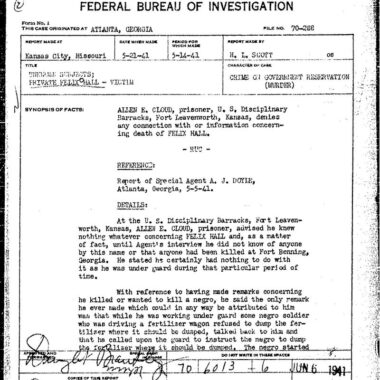
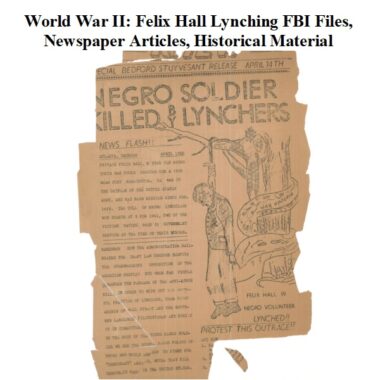
World War II: Felix Hall Lynching – FBI Files, Articles, Historical Records
$9.99 Add to Cart -
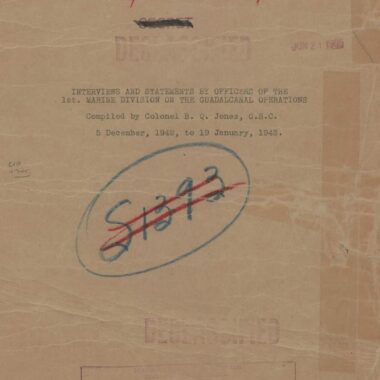
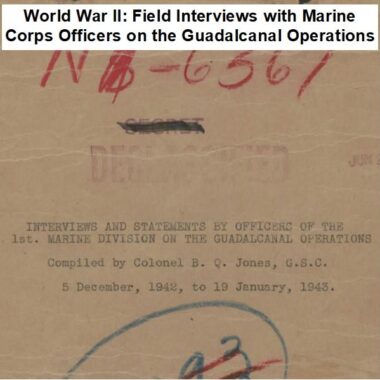
World War II: Marine Corps Officer Interviews on Guadalcanal Operations
$3.94 Add to Cart -
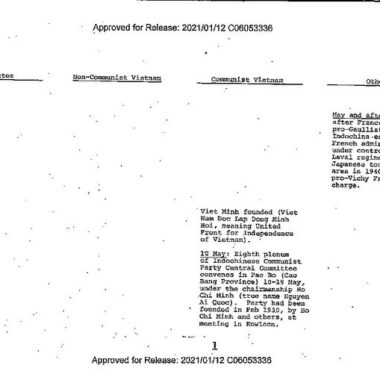
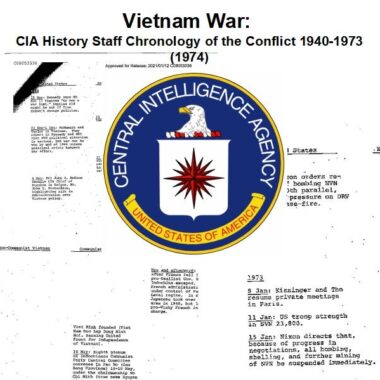
Vietnam War: CIA Chronology of the Conflict, 1940-1973 (1974)
$1.99 Add to Cart -
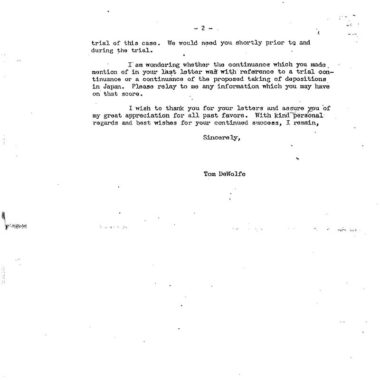
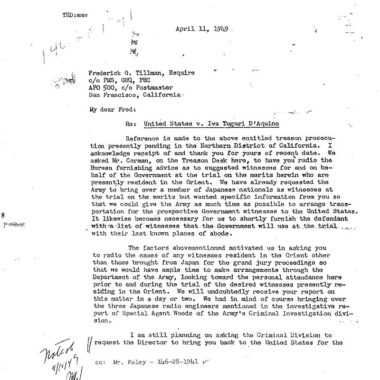
Tokyo Rose: Department of Justice Prosecution Files
$19.50 Add to Cart

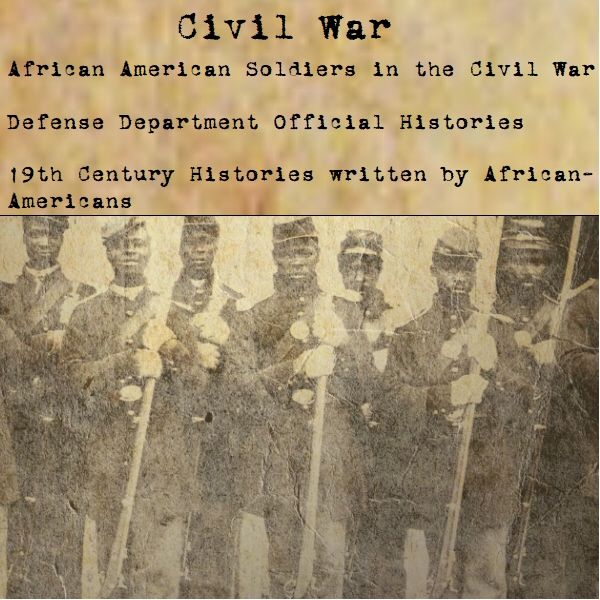
Reviews
There are no reviews yet.